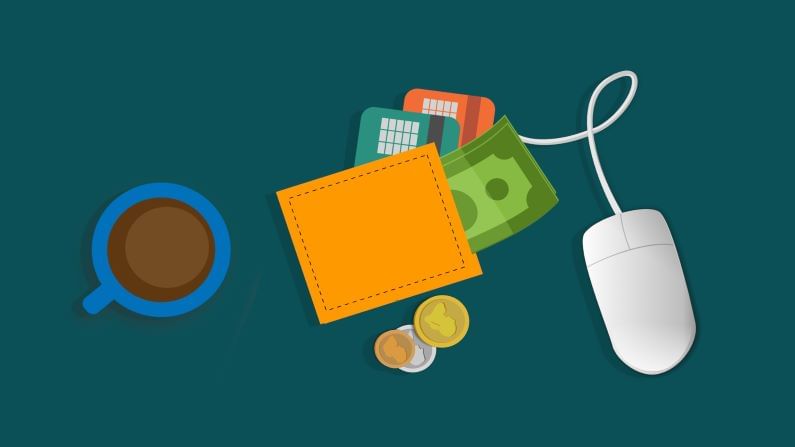35% of mobile wallet users face fraud regularly: FIS survey
Phishing and QR/UPI code-related frauds are most common weapons of fraudsters who have also started unleashing crypto-related frauds have also begun

Online and digital payments have gone up by leaps and bounds in India and fraudsters have also found a way to strike gold in the new transaction trend. Phishing and scam involving QR codes or UPIs were most frequently reported, according to a new PACE report released by FIS, a Global Fortune 500 company.
The study jointly done by FIS and different mobile wallet company reveals that in the past one year between June 2020 and April 2021 phishing-related frauds have been the most common among different age groups.
This study also revealed that Paytm is the most preferred mobile wallet of India across all age groups.
Phishing is leading
The survey was conducted across five age groups between 18 years and 75/80 years. Across all the groups, phishing was the most common weapon of fraudsters.
Almost 69% of the current adult population are using mobile wallet, of which 35% people faced financial frauds in the last 11 months.
18-24 years
In the youngest age group, 18% of the users were victims of phishing-related frauds, 15% fell victim to QR or UPI code-related frauds, while credit card and debit card-related fraud happened with 11% users.
Card skimming and crypto related frauds have happened with 9% and 5% users respectively.
25-29 years
In this segment phishing and QR/UPI code-related frauds top the chart claiming 21% victims. Credit and debit card-related scams happened with 16% users. On the other hand, 9% and 4% users witnessed card skimming and crypto-related fraud.
30-40 years
In this age group phishing and QR code-related fraud stands first and second with 21% and 20% users reporting these types of fraud respectively. Card-related frauds came third with 12% users falling victims.
Card skimming and crypto-related frauds have been witnessed by 10% and 8% users respectively in the last one-year time window.
41-55 years
As per the survey in the 41-55-year age group phishing-related fraud happened with 15% users, QR or UPI code related fraud happened with 13% and credit card and debit card related fraud happened with 10% users.
Card skimming and crypto related fraud happened with 6% and 5% users respectively between June, 2020 and April 2021.
55 years +
The seniors are labelled as the most vulnerable section. The study suggests that 9% users from this segment have witnessed phishing-related fraud while 8% faced UPI/QR code-related fraud.
Credit and debit card related fraud happened to 6% people, where 3% users were victims of card skimming and 1% of crypto-related fraud.
Survey parameters
The FIS survey was conducted among 10,000 adults from each age group. Both urban and rural populations were taken into account while doing the study, the ratio of urban and rural population stood at 66: 34 among 10,000 sample.
“The pandemic has led India to a new phase of digital payments adoption. To be successful, it’s vital that the banking sector provides technology-centric strategies which meet the diverse preferences of consumers’ rapidly changing habits, while also driving financial inclusion for underserved communities around the country.” said Bharat Panchal, chief risk officer, FIS.
FIS is a leading provider of technology solutions for merchants, banks and capital markets firms globally including India for the last two decades.
Leading mobile wallet
According to the FSI study popular mobile wallet Paytm is leading is all five segments followed by Google Pay and Amazon Pay.
Among these five age groups (18-24 years, 25-29 years, 30-40 year, 41-55 years and 55 years+) Paytm dominates in each and every segment. The market shares in these age groups were 74%, 76%, 71%, 66% and 51% respectively.
Google pay is the second most popular mobile wallet with a market share of 67%, 68%, 66%, 59% and 44% respectively, followed by Amazon pay with a market share of 54%, 65%, 65%, 53% and 36%.
Other mobile wallets Paypal, Phonepay, BHIM and YONO were placed at distance fourth, fifth and sixth place.
Important points
During the monetary policy meeting on April 5, Reserve Bank governor Shaktikanta Das said, “To strengthen the system and make it robust we have decided to incentivise the migration of mobile wallets to full-KYC. It is proposed to increase the current limit on outstanding balance in such Prepaid Payment Instruments (PPI) from Rs 1 lakh to Rs 2 lakh.”
Currently a person can put a maximum of Rs 2 lakh in his/her fully-KYC mobile wallet, but daily transaction limit is set at Rs 10,000 by RBI.
According to the RBI guideline any subscriber can transfer each and every penny from one platform to another from April 2023, a facility currently unavailable. Once this process starts, these mobile wallets would almost turn into a bank account.
Any amount of money can be withdrawn via QR/UPI code from the ATMs also from FY23.